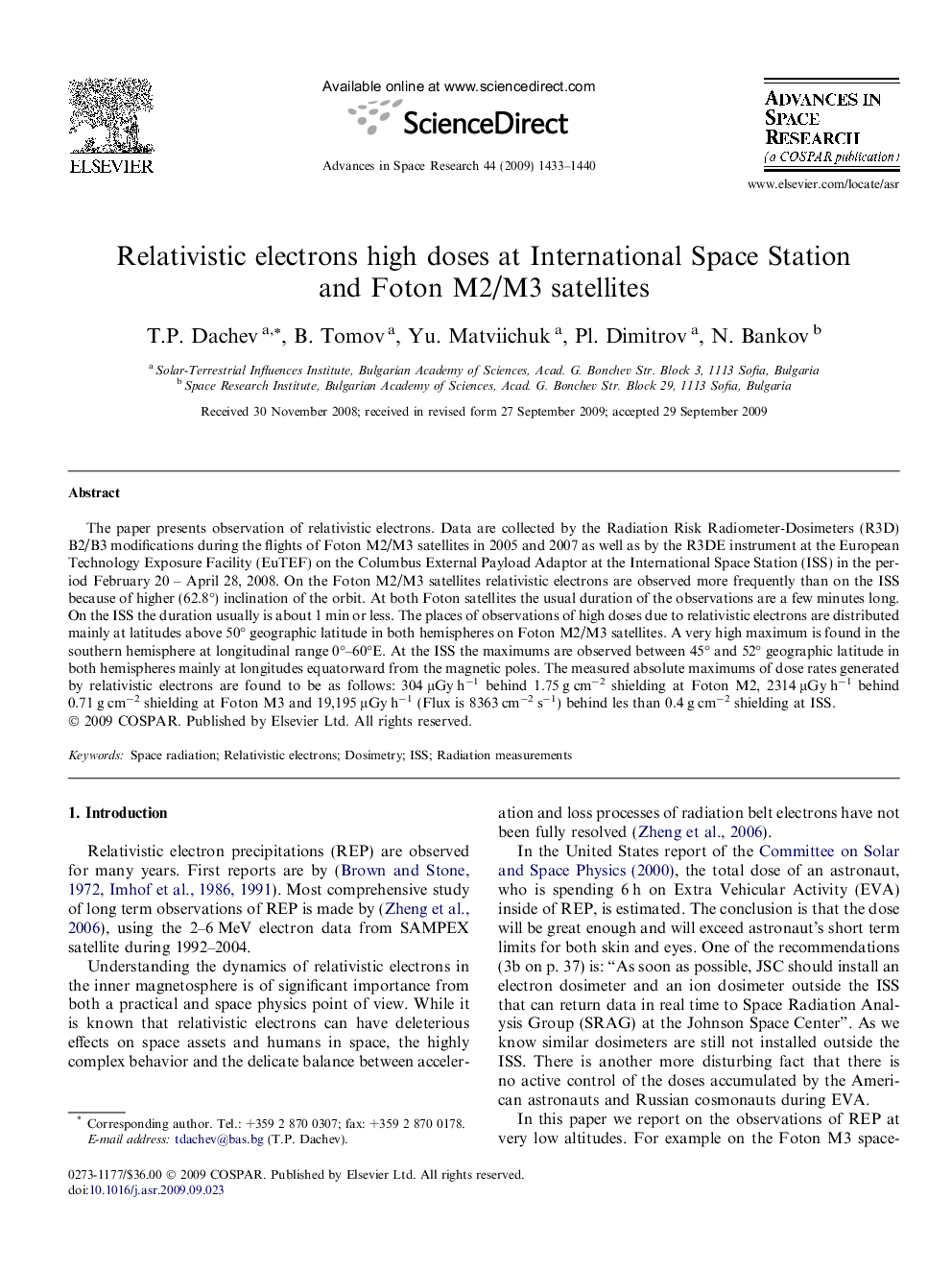| Article ID | Journal | Published Year | Pages | File Type |
|---|---|---|---|---|
| 1766757 | Advances in Space Research | 2009 | 8 Pages |
The paper presents observation of relativistic electrons. Data are collected by the Radiation Risk Radiometer-Dosimeters (R3D) B2/B3 modifications during the flights of Foton M2/M3 satellites in 2005 and 2007 as well as by the R3DE instrument at the European Technology Exposure Facility (EuTEF) on the Columbus External Payload Adaptor at the International Space Station (ISS) in the period February 20 – April 28, 2008. On the Foton M2/M3 satellites relativistic electrons are observed more frequently than on the ISS because of higher (62.8°) inclination of the orbit. At both Foton satellites the usual duration of the observations are a few minutes long. On the ISS the duration usually is about 1 min or less. The places of observations of high doses due to relativistic electrons are distributed mainly at latitudes above 50° geographic latitude in both hemispheres on Foton M2/M3 satellites. A very high maximum is found in the southern hemisphere at longitudinal range 0°–60°E. At the ISS the maximums are observed between 45° and 52° geographic latitude in both hemispheres mainly at longitudes equatorward from the magnetic poles. The measured absolute maximums of dose rates generated by relativistic electrons are found to be as follows: 304 μGy h−1 behind 1.75 g cm−2 shielding at Foton M2, 2314 μGy h−1 behind 0.71 g cm−2 shielding at Foton M3 and 19,195 μGy h−1 (Flux is 8363 cm−2 s−1) behind les than 0.4 g cm−2 shielding at ISS.
